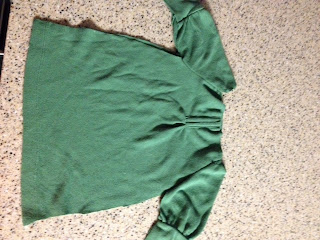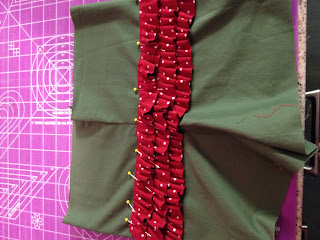Every year I put up jars and jars of blackberry jelly. My husband could live off PB & J sandwiches and my kids think jelly sandwiches are a sugar gift from God. We go through jars every year and I rely on two wild bushes of blackberries for my bounty. I feel sort of rednickish (if that is a word) because the bushes have grown in the middle of a nice neat flower bed and I now refuse for anyone to treat my berries like a weed. I am basically killing my flowers to allow the torny bushes a chance to blossom and grow.
While in the kitchen one day preparing to can a few batches of blackberry jelly my husband asked if I could make watermelon jelly. We laughed that they would even be such a thing and then quickly turned to the internet. The internet and Pinterest have everything so it has to be somewhere, right? Within minutes we found several recipes for watermelon jelly and watermelon rind preserves. Willing to try anything we got to work prepping for our watermelon jelly.
I found the recipe on a website called Pick Your Own. They list various farms in different areas and tell you how to can or freeze your harvest. They had a really good recipe for Watermelon Jelly that was super easy plus they give helpful information for those new to canning.
The recipe does call for 4 cups of chopped Watermelon which I found out later from a different recipe is equivalent to 2 cups of watermelon juice. We are very blessed to live a little over an hour away from Watermelon country and can get a good sized watermelons for $3 at the Farmer's Market in Cordele, GA. If you are better at haggling then I am, you could probably get it cheaper. One Watermelon would probably do 5 or more batches of jelly. At first I tried to only use the heart of the melon for my juice as to not lose the sweetness, but after tasting the jelly, it is plenty sweet and could probably use less sugar, but I hate messing with sugar amounts of a jelly recipe.
My adapted Recipe:
4 cups of cubed Watermelon or 2 cups of juice
3 1/2 cups of sugar
1 package of liquid pectin (I prefer Certo)
yields 2 pints
My husband absolutely spoils me. After several years of dealing with blackberries and cheese cloth to get every seed out, he bought me a strainer to attach to my kitchen aid mixer. (I know it is not meant for blackberries and that is a topic for another day.) We were able to run the watermelon straight through the strainer and out came 2 cups of perfectly liquid watermelon juice in no time! The seeds and heavy pulp came out another end into a bucket to be feed to the chickens.
Mix your juice, sugar, and pectin on the stovetop for a LONG time. It takes about 20-30 minutes to get the mixture up to boiling. The hint with making the watermelon jelly is to get the temperature up to 220 degrees. I learned the hard way that 115 degrees won't cut it. I clipped a candy temperature to the side of the pot and continued to boil. Once it reaches 220 degrees the mixture will start to bubble and foam up to the top of the pot. It is important to use a large pot for this reason. I let my mixture boil for about a minute at 220 degrees and then removed it from the heat.
You can then place your jelly in your jars following a traditional canning method. I processed the jars for ten minutes. It did take about a week for the jelly to completely gel. Most recipes take up to two weeks, so don't give up if you wake up the next day and the mixture is still liquid. Liquid jelly really bothers me, even if it is the next day, so to fix this problem I doubled my recipe and added 3 packs of liquid pectin instead of 2. It just did fit in my large pot pictured above.
I'm curious what other types of jellies are to be made out there. If you can think it, you can make it! The whole family was pleasantly surprised by this recipe. The best way to describe the taste is a watermelon Jolly Rancher!






































































